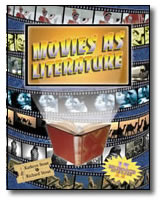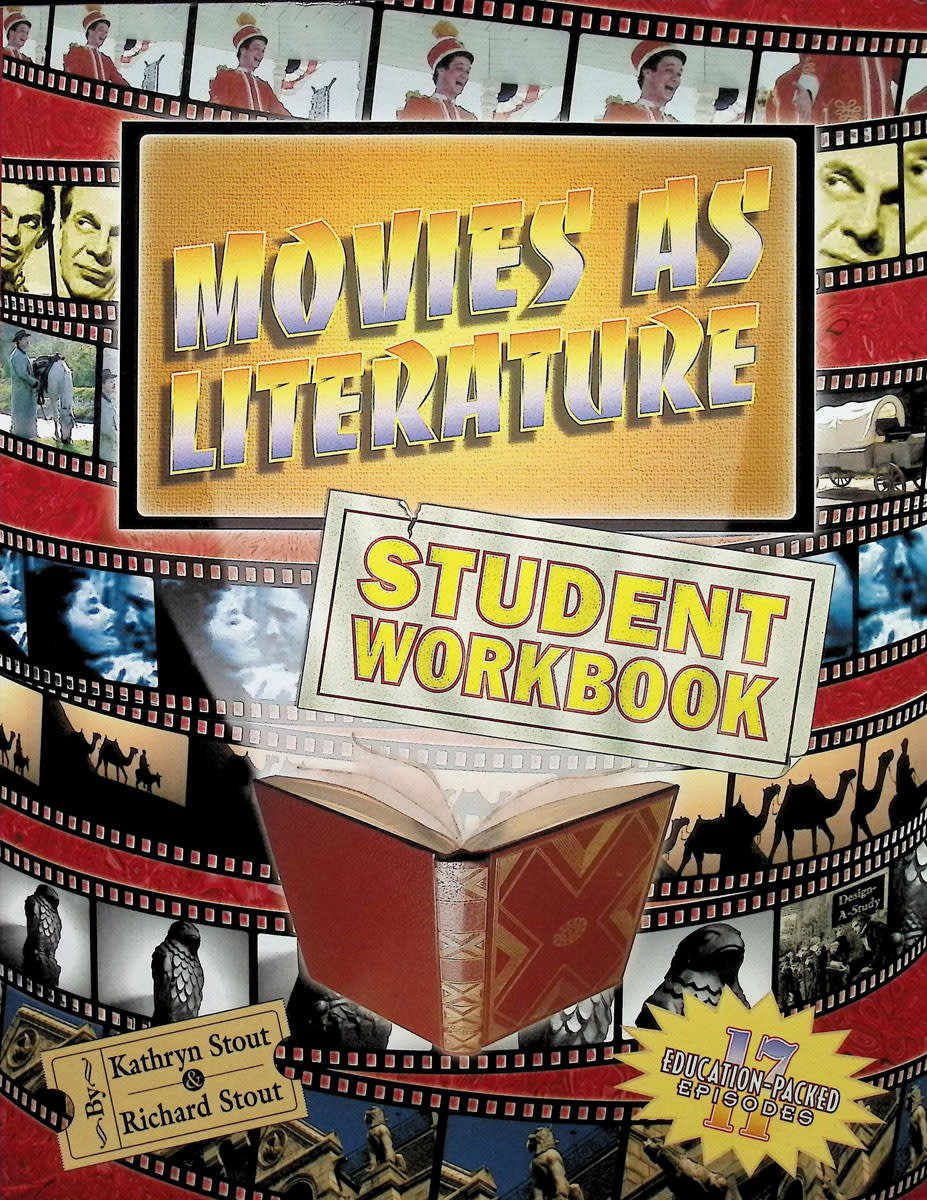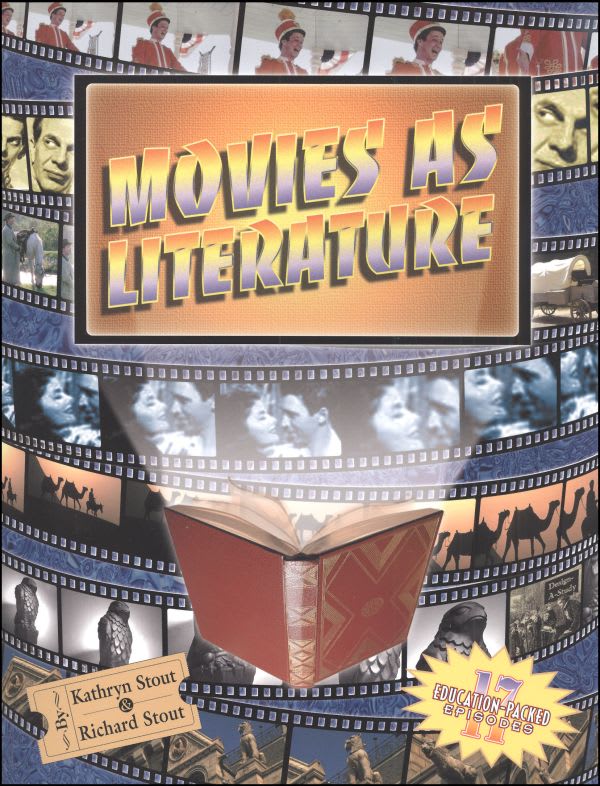Movies as Literature uses classic films as material to be used for literary analysis in this full-year English course for high school students. Alternatively, it might be used as an English course supplement over a number of years from grades seven through twelve.
Movies as Literature is a book that contains both student and teacher material. The 110 pages of student lessons can be reproduced for one student or a classroom. Students will likely also need the 10-page glossary for reference.
Rather than print or copy student pages, you can purchase a companion student workbook that has the student pages with space added for them to write notes or answers as well as the glossary and extra bits of movie trivia they will likely find interesting.
Both books are available in either print or digital formats. If you purchase just the course book in a PDF format, you can easily print out student pages. However, these pages don’t have as much space between questions as do the pages in the separate student workbook.
The course presents studies for 17 movies. The movies themselves will need to be accessed on your own. You will want to have a DVD or streaming option that allows students to watch the movie, rewind, and search for particular scenes rather than a one-time airing on a television station. Since the choice of movies will matter a great deal to most parents and students I will list all of the movie titles here.
- Shane
- Friendly Persuasion
- The Quiet Man
- Arsenic and Old Lace
- The Music Man
- E.T. The Extra-Terrestrial
- The Maltese Falcon
- Rear Window
- Emma
- The Philadelphia Story
- The Journey of August King
- To Kill a Mockingbird
- A Raisin in the Sun
- Raiders of the Lost Ark
- Henry V
- A Man for All Seasons
- Chariots of Fire
Movies as Literature begins with 14 pages of “Getting Started” information for both the teacher and the student. I expected this book to serve only as a supplement, but reading through the Getting Started section made me confident that using Movies as Literature as a complete course would work well. The movies themselves take the place of literature, acknowledging the reality that this is the medium for storytelling most accessible to modern audiences. Preparation for discussion and the discussion itself teaches students many of the tools of literary analysis such as plot development, theme, foreshadowing, setting, mood, character development, symbolism, the author’s purpose, point of view, motivation, puns, and irony. The analysis includes other aspects applicable to film such as staging and dramatic effects. After discussion, students are given two or three questions from which they will choose one as the subject for an essay.
It is simple to adjust the course to fit a wide variety of needs. “Activities for Extended Study” can be used by students at any time, but parents or teachers who want to use this as an Honors level course should require students to complete at least five of these extra activities. Students with special needs can provide oral answers to composition questions rather than essays. Most junior high students should tackle only the first six movies, and teachers might skip questions that seem too advanced.
Lessons are set up so that a student can do much of the preparatory work on his or her own. At the beginning of each lesson is one page of background information. This includes information about the film itself, a list of key elements and ideas to be studied in the lesson, and brief background that might address the historical period, the genre of the movie, a film technique, or another point that will help students view the movie with greater understanding. This page also highlights one or more things for students to watch for or consider while they are viewing the movie.
After students read this page, they should watch the movie straight through. Then they read through the questions and re-watch the movie with the questions in mind. Students will likely take notes as they watch the second time. Next the student discusses questions with the teacher. (A group class meeting for this part of the study would be terrific.) Students will then select their essay question if they have not yet done so. They can re-watch the movie to search for supporting details to use. Students should draft, revise, and edit their essays before producing their final version. Instructions for essay-writing are included in the Getting Started section.
Activities for Extended Study might include elements that will extend beyond the time spent on the original lesson. For example, one activity for the first movie, Shane, says, “This movie is based on the novel Shane by Jack Schaefer. Read the novel. Compare and contrast the book and the movie. Do you think anything essential was left out of the movie? Explain.” Students might need a week or two to read the novel, and maybe an additional week to write the paper, depending upon the depth of their analysis. While many of these activities require reading, some might require other types of research. For example, the second activity for the first lesson says, “Look at the historical context of the movie. Is the conflict between homesteaders and cattle ranchers realistic? If so, how were those conflicts resolved.” Personally, I think high school students should complete at least one of the activities that require them to read a book or play and contrast it with the movie version so that they learn to compare the two forms of media.
Study of the selected movies sometimes assumes the student’s familiarity with Scripture and religious concepts. In the study of E.T., question 16 talks about the idea of E.T. as a Christ figure and raises a question about biblical symbolism (p. 56). In the questions for The Journey of August King, one question asks if a character believes in God, and a later question talks about this same character’s concern about someone else “taking her soul.” Yet another question references the biblical allusion to “streets of gold” (p. 85).
I think the questions posed in the book are excellent, but I can think of at least a few others that I would want to pose in regard to some of the movies. I’m sure other parents and teachers might, likewise, want to add a few discussion questions of their own, and that should be easy enough to do.
Summary
Movies as Literature really surprised me with the depth of what it accomplishes. It looks so interesting, that as I read through it, I found myself wishing for an opportunity to teach the course.










